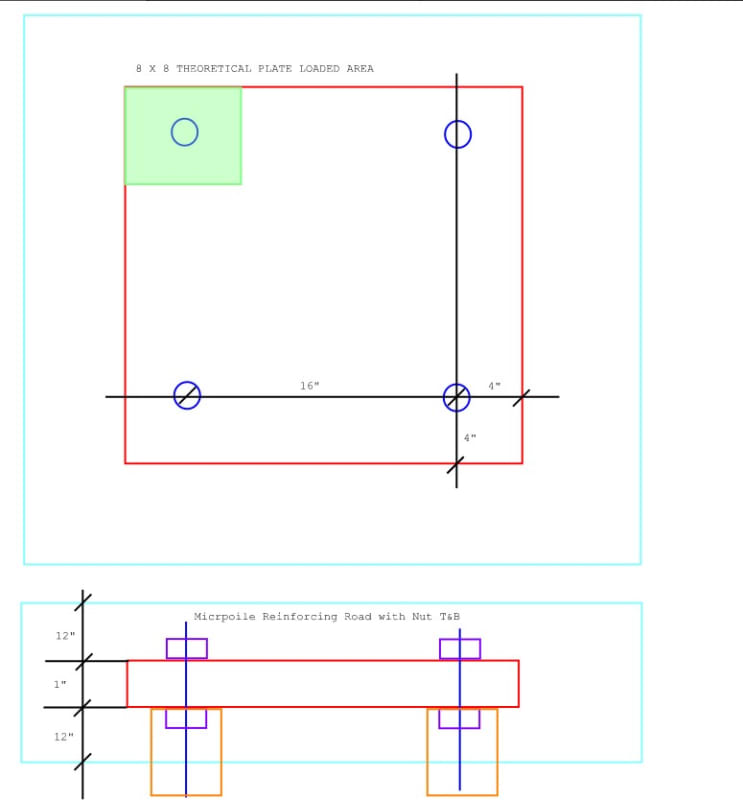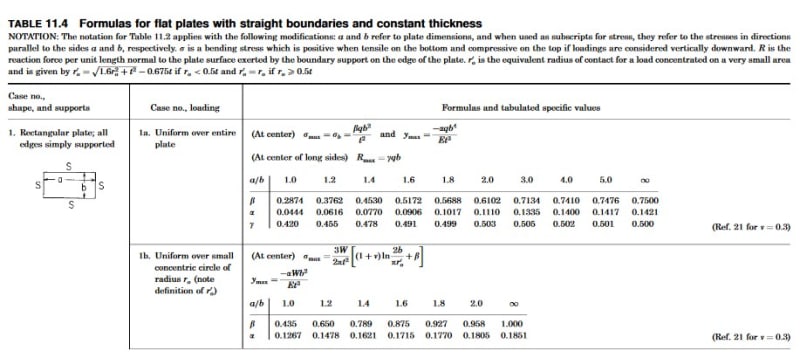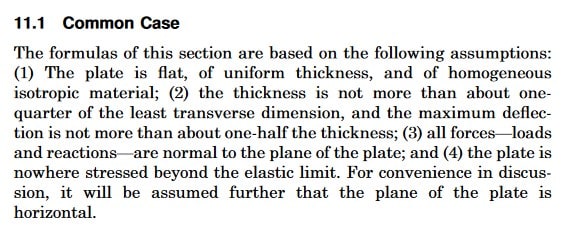I wanted to get some suggestions on the best way to design a micropile bearing plate other than using FEM.
I was planning on using Roark's formulas for a flat plate with all edges simply supported and a load applied over a small radius as per Case 1b.
Then, I would only analyze a certain part of the plate which I would assume takes the entire load from that particular micropile.
For example, if I have a 24 x 24 plate and assume the plate loaded area is only 8x8 and analyze that as per Roark would that be a reasonable approach?



I was planning on using Roark's formulas for a flat plate with all edges simply supported and a load applied over a small radius as per Case 1b.
Then, I would only analyze a certain part of the plate which I would assume takes the entire load from that particular micropile.
For example, if I have a 24 x 24 plate and assume the plate loaded area is only 8x8 and analyze that as per Roark would that be a reasonable approach?



